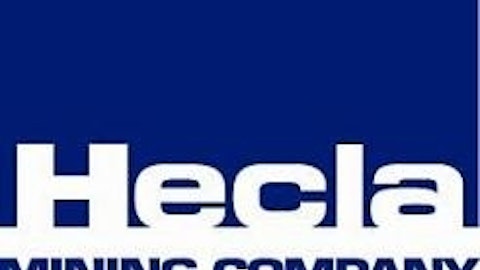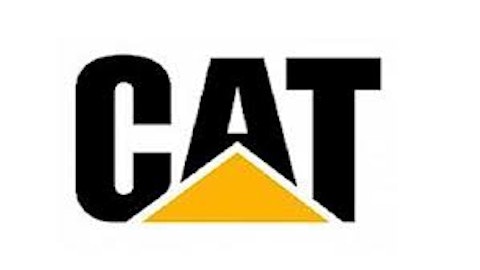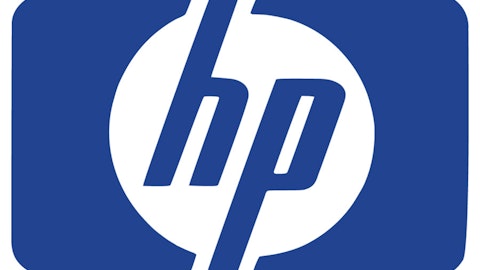

Fundamentals
Caterpillar Inc. (NYSE:CAT) manufactures and sells construction and mining equipment. It is most famous for the yellow bulldozers and construction equipment that line many construction sites, but with the acquisition of Bucyrus International two years ago, it is also deeply in the mining business.
Valuation-wise, Caterpillar is a fairly priced stock with shares trading at 11 times earnings and 10 times next year earnings. The company pays its investors an above average dividend of almost 3% and has a payout ratio of only 20%. Caterpillar Inc. (NYSE:CAT) has steadily raised the dividend over time, and
even during the financial crisis of 2008.

Analysts are neutral on the stock. UBS has a price target of $84 while RBC Capital Markets has a higher target of $92. Analysts, on average, expect a five-year annual earnings growth rate of 14%.
Macro fears
The big reason for Caterpillar Inc. (NYSE:CAT)’s recent weakness is China. Because Caterpillar makes excavation and mining equipment, it is highly levered to the building boom in China, which consumes over 45% of the world’s steel. Unfortunately, the building boom is slowly losing steam. There are many ghost cities in China, such asOrdos, with many houses but no residents.

Source: GeoEye
The building boom spurred demand for iron ore, coal, and excavation equipment. Caterpillar and its rivals, Joy Global Inc. (NYSE:JOY) and Deere & Company (NYSE:DE), all benefited from it. But now that housing construction is slowing down, there is not as much demand. According to Caterpillar Inc. (NYSE:CAT), industry-wide sales of construction equipment in China are abouthalf the levelof two years ago. As a consequence, despite the hot U.S. housing market, Caterpillar’s gross margin is down from 30% to 26% and profit margins are down from 7% to 6.4%.
Hedge fund manger Jim Chanos, who is short the company, estimates that roughly half of Caterpillar’s profits come from capital expenditures of mining companies. As there is less demand for iron ore, due to the building bust in China, Caterpillar Inc. (NYSE:CAT)‘s profits will take a hit.
Accounting problems
Caterpillar has further stumbled in China with accounting problems. In June 2012, Cat bought Era Mining Machinery for $734 million. Unfortunately, it discovered accounting problems and had to take a non-cash charge of about $580 million. While that may not be much for a market capitalization of over $50 billion, the write-down is a symbol of the missteps that Caterpillar has made in China.
Competitors
Joy Global Inc. (NYSE:JOY) is a manufacturer of mining equipment for the extraction of coal and other minerals and ores. Joy Global is more levered to China than Caterpillar because it has a smaller market cap of $5.2 billion versus Caterpillar’s $53 billion, and it paid $1.4 billion for International Mining Machinery Holdings in 2011 versus Caterpillar’s $734 million acquisition of Era.
With China slowing, the same macro fears that overhang Caterpillar’s stock are occurring to Joy Global Inc. (NYSE:JOY), thus causing a more than 20% drop in the share price year to date. Even more concerning is that Joy has goodwill and intangible assets that account for over 60% of total equity. One positive for Joy Global is that it is priced at a better valuation than Caterpillar Inc. (NYSE:CAT), with shares trading at 8 times next year’s earnings.
Deere & Company (NYSE:DE) manufactures and distributes agriculture equipment, construction, and forestry equipment. Between the three companies, Deere & Company (NYSE:DE) is the least dependent on China because its main source of income is agricultural equipment, which should see higher demand as the world population grows. Last year, 81% of Deere’s total revenue came from the agricultural segment.
The agricultural segment is growing at 13%, primarily due to higher shipper volumes and improved price realization. Deere is priced around Caterpillar’s valuation, with shares trading around 10 times this year’s earnings and 9.61 next year’s. Analysts are bullish on this company with a price target of $95, or 15% above current levels.
Conclusion
It is very hard to call bottoms. Right now, long-term investors in Caterpillar Inc. (NYSE:CAT) would do well by sitting on the 3% dividend yield. Short-term investors should not get into the Caterpillar because if Chanos is right, there will be more room to fall. Of the three companies, Deere is the strongest because it has a strong focus on agriculture, which should be a growing field in the future. Joy Global and Caterpillar stock are speculative investments until China turns around.
The article Caterpillar: Buy Now or Wait Until Chinese Macro Fears Subside? originally appeared on Fool.com and is written by Jason Bond.
Jason Bond has no position in any stocks mentioned. The Motley Fool has no position in any of the stocks mentioned. Jason is a member of The Motley Fool Blog Network — entries represent the personal opinion of the blogger and are not formally edited.
Copyright © 1995 – 2013 The Motley Fool, LLC. All rights reserved. The Motley Fool has a disclosure policy.



